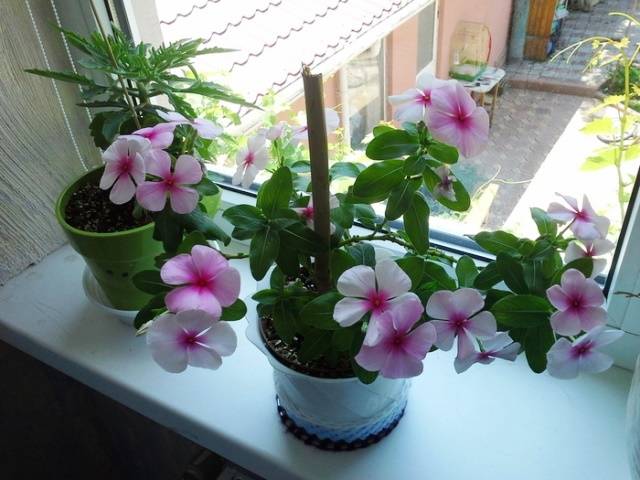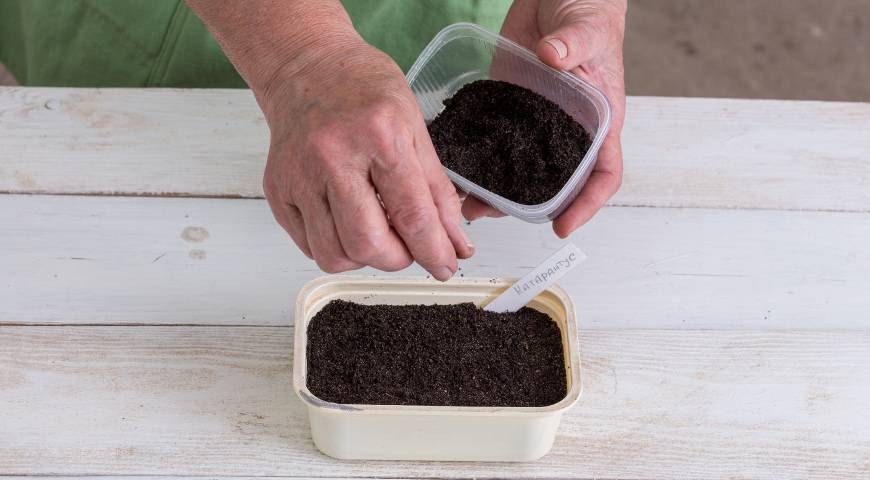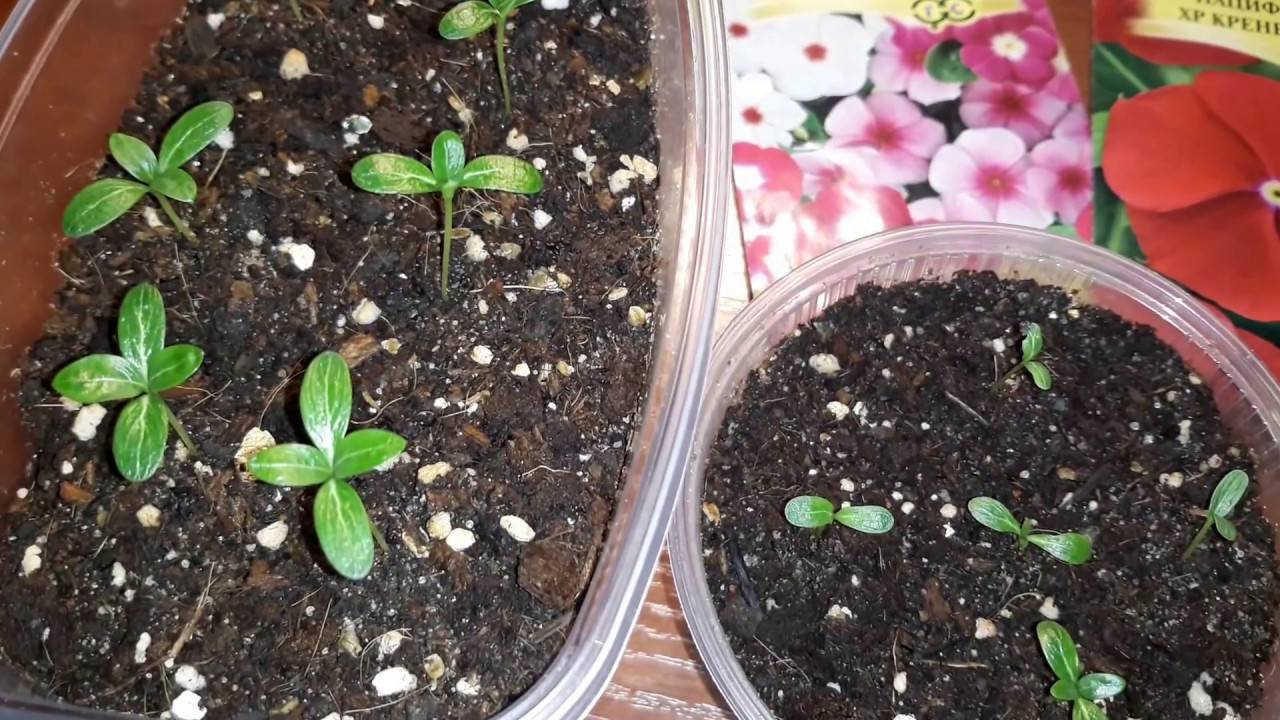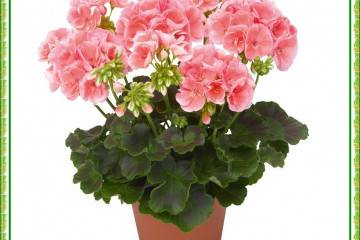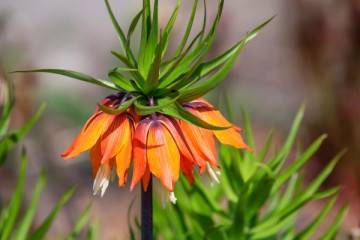Katarantus - growing from seeds: when to plant seedlings
Content:
- Advantages and disadvantages of growing catharanthus from seeds
- How to collect catharanthus seeds
- How to choose seed in the store
- Catharanthus: growing from seed, when to plant for seedlings
- Preparatory stage for sowing seeds
- Step-by-step process of sowing catharanthus seeds for seedlings at home
- Conditions for seed germination
- Seedling care
- Scheme and timing of the pick
It's nice to be in a house with many different colors. Indoor plants create coziness and help bring unique interior design to life. One of these plants that will harmoniously fit into any design is the catharanthus. You can grow it yourself at home from seeds.
Advantages and disadvantages of growing catharanthus from seeds
Benefits of growing a plant from seed:
- planting material can be purchased at any gardening store;
- low cost of seeds;
- a wide range of varieties;
- unlike cuttings, which are easily injured, this problem will not arise with seeds.
But this breeding method also has disadvantages.
Disadvantages of seed growing methods:
- The seed bags may contain completely different planting material.
- The seeds can be infected or damaged.
- The expiration date on the package may differ from the real one.
But the main disadvantage is the duration of cultivation and the laboriousness of this process. During reproduction, there is a possibility that most of the seeds will not sprout, or the seedlings will die during the growth period. In this case, grafting is a more reliable way.
How to collect catharanthus seeds
Collecting catharanthus seeds at home is unlikely to work. Fruits for a short warm period in temperate latitudes do not have time to ripen. Therefore, the planting material will have to be bought at a gardening store.
How to choose seed in the store
When choosing seeds for planting, you need to pay attention to a number of factors. If these tips are ignored, it is quite possible that the purchased seeds will be of poor quality.
What to look for when choosing:
- The store must be verified and reputable.
- You should not buy planting material from your hands - it may turn out that they are already old and will not germinate.
- The packaging must be strong and free from defects.
- It is important to pay attention to the number of seeds in the package and the expiration date.
But even these tips don't always work. In good proven stores, there may be a defective batch.
Catharanthus: growing from seed, when to plant for seedlings
Planting dates are determined based on the region where the plant is grown. Before planting seeds in the ground, you need to decide on a favorable sowing time. The optimal time for planting is the last decade of February - early March. In the southern regions, sowing can be postponed several weeks in advance. If you plant a seedling during this period, then by mid or late summer the plant will begin to bud and bloom.
This period was not chosen by chance. Daylight hours increase, it becomes warmer outside. All this together has a positive effect on the germination of planting material.
Preparatory stage for sowing seeds
The second important stage is the choice of a container for planting and soil, as well as the preparation of planting material. In order for the seeds to sprout as quickly as possible, you need to follow some rules.
Selection of containers
The planting capacity can be any. The main thing is that it is spacious and processed before sowing. The containers must be rinsed with a potassium permanganate solution to disinfect. Seeds can be planted in plastic or wooden boxes.
Planting material can also be sown in peat or plastic cups. With this method of landing, a pick will not be necessary.
Soil preparation
The second stage of cultivation is soil preparation. The composition of the substrate suitable for catharanthus:
- turf and leafy land;
- peat;
- humus;
- river sand.
All ingredients are combined in one large bowl until smooth. They must first be disinfected.
Soaking and disinfecting seeds
The question of how to grow a catharanthus from seeds at home for seedlings can be easily solved if the planting material is properly prepared. In order for the seedlings to appear faster, the seeds are soaked and pickled before planting.
Here's how they do it:
- The seeds are soaked for 20 minutes in a solution of potassium permanganate.
- Dry the planting material.
- Placed in damp gauze and put it in a warm and dark room.
- After a few days, the seeds will hatch and they can be planted in the ground.
Growing seedlings without this stage will be more problematic and longer in time.
Step-by-step process of sowing catharanthus seeds for seedlings at home
How to sow seeds in the ground:
- Moisten the soil with warm water and wait until it is completely absorbed.
- Plant the seeds at a distance of 1-2 cm from each other, to a depth of no more than 1 cm.
- Lightly sprinkle soil with soil and sprinkle with water from a spray bottle.
- Cover the container with glass or cling film on top to simulate a mini-greenhouse.
Conditions for seed germination
It is believed that catharanthus from seeds grows better in the dark, so it is better to place containers in a warm and dark room.
Seed germination schedule
Catharanthus planted by seed springs up quickly enough.
Planting material emergence schedule:
- After about a week, sprouts should hatch and grow 2-3 cm.
- After 30 days, the seedlings should already have 6-8 leaves. The height of the sprouts is 10-12 cm.
- After 90 days, the plant gives its first buds and blooms.
On average, the process, starting from the sowing of seeds and the appearance of inflorescences, takes 60-70 days.
Seedling care
After the seedlings have sprouted, the crucial moment comes - caring for it. Most often, it is at this stage that most seedlings die, so you need to approach it very responsibly.
Watering
Adult plants love abundant watering, which is not the case for seedlings. Irrigation should be moderate. It is best to use a spray bottle and only wet the topsoil.
For irrigation, use warm water that has been settled for 2 days. Boiled water, melt water, or rainwater is also suitable. If melt water or rainwater is used, then collect it in an environmentally friendly place away from the city and roadways.
Top dressing
The first top dressing is applied after germination, after about 2 weeks. It is best to add phosphorus fertilizers to the soil at this stage. Nitrogen is added to the soil in the form of nitrates. Complex fertilizers aimed at the growth of seedlings are also suitable. Dosages should be taken in the amount indicated on the package.
From organic matter, wood ash can be used. It is poured every 3 weeks before watering.
External factors (lighting, air humidity, temperature)
After the appearance of the first shoots, the containers are rearranged in a lighted place with diffused light. The seedlings should be in the sun most of the day.
The optimum temperature for rapid growth is 20-23 ° C. Air humidity should be average, within 60-70%. If the air is too dry, you can put a cup of wet expanded clay next to the box.
Scheme and timing of the pick
If the seeds were planted in one container, then after 3-4 full-fledged leaves appear on the seedlings, it must be dived. This procedure should not be delayed. The longer the seedlings grow in one container, the more the root system is intertwined with each other. If you miss the right moment, then after transplanting overgrown seedlings, many of them may die.
How the pick is carried out:
- Remove the seedling from the pot.
- Trim the tip of the root so that the root system grows more actively.
- Fill the pots with the same soil as that used for planting.
- Add humus, vermiculite and a small amount of complex mineral fertilizers to the soil.
- Plant the seedlings in separate pots.
- Water abundantly.
- After 2 weeks, they need to be fed.
It is better to dive the seedlings into peat cups, so that later they can be planted with them in a permanent pot.
Catharntus (lat.Catharanthus) is a popular flowering plant that is very popular with many flower growers. It can be grown as an ampelous plant. Growing seedlings from seeds is a long, but very interesting exercise.


